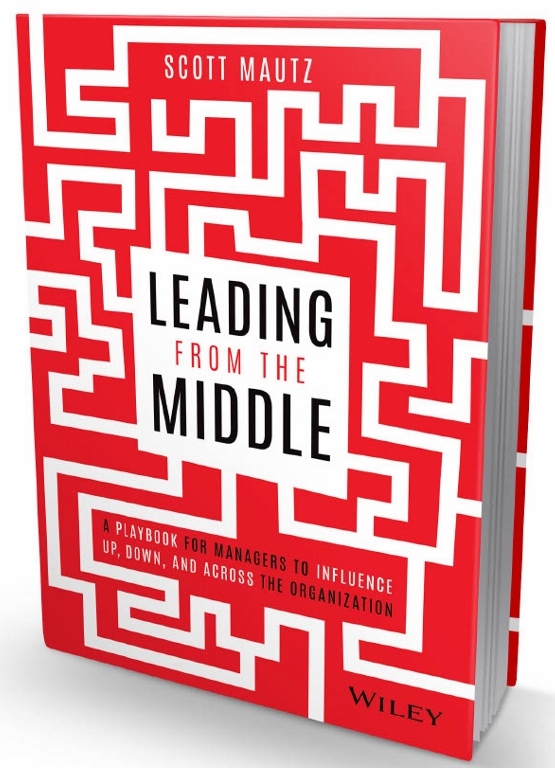
More than one CEO has said, “Leadership is 90 percent communication,” and research bears them out by showing that the way in which managers communicate with employees is one of the most important factors in driving employee engagement. Leaders must communicate in a way that inspires a felt sense of confidence and that builds certainty and community. Doing so makes the difference between compliance and commitment, meaningless work and meaningful work. Here are 5 ways to ensure your messaging will truly matter to the recipients.
1) Articulate a compelling vision that resonates with people’s identities
Compelling visions make membership within an organization feel special, enriching, and meaningful in and of themselves. They also create meaning by appealing to and resonating with members’ identities. Identities are formed through self-definition of core values and association with the organization’s values. If you make evident how the vision supports known personal and company values, you’ve thus reaffirmed individual and collective identities. Similarly, when you communicate the vision in a way that strengthens the sense of community, the “we’re in this together-ness,” it further enhances the message’s meaning.
2) Drive mission fit
Messaging directed towards helping employees understand how their work fits into the broader mission is powerful and meaningful. By taking time in your messaging to help connect the dots for your employees, you enhance their feelings of self-worth and certainty. Your employees also want to understand that what they’re specifically being asked to do really matters and that it is worthy of their time and energy. Addressing these basic human needs is effectively helping to answer the deeply held questions: “What’s the point?”, “Where do I belong?”, and “How do I Fit in?”
3) Be confident when communicating
There’s an old adage in leadership that says, “An organization is never more confident than its leader.” When you communicate with confidence, it breeds belief and a sense of certainty. Even in the face of mistakes, your confidence should show up in the form of unswerving accountability as well as self-confidence in course correction, while excuses should be absent. As a confident leader, you can communicate hope even as you’re outlining reality. You’ll help create a sense of community as optimism translates into a pride of being involved in an organization with promise. Furthermore, when you communicate your confidence in the troops and their ability to carry out the mission, it nets an increase in your employees’ sense of self-efficacy.
4) Tell stories of significance
Organizational behavior researchers Tom Lawrence and Sally Maitlis indicate that storytelling is a vital meaning-making leadership skill. You can make meaning when you share stories of “sparkling moments”–when the team really nailed it, when they overcame adversity, or when they achieved accomplishments that have been more broadly taken for granted. Such stories allow the protagonists a moment in the sun and motivate others to become the protagonist of future stories. Such stories provide hope and engender resiliency.
5) Share goals with intrinsic, not just extrinsic, value
How many times have you found yourself introduced to a big, honking goal and walked away uninspired? Odds are the goal was “for the man”–that is, to make more profit, to drive ten points more of sales, to deliver something that, in all honesty, you didn’t really personally connect with. You can make meaning when you ask yourself a few simple questions before articulating a goal to the people in your organization:
- What’s in it for them?
- How will this goal connect with them personally and emotionally?
- How might accomplishment of this goal help them to grow, and what else might it mean to them personally if the goal is achieved?
If you communicate goals with heavy extrinsic value only, you effectively say to the people in your organization, “You need to hit this goal because it’s important to my advancement,” when instead you should be implicitly saying, “Here’s a goal that will advance what I need, what the company needs, and what you need in order to derive a greater sense of meaning, fulfillment, and accomplishment in your work.”
As a leader, you spend a substantive amount of time messaging the troops. So you might as well make it meaningful and resonant.
Get my new book, an Amazon #1 BEST-SELLER in multiple categories! Leading from the Middle: A Playbook for Managers to Influence Up, Down, and Across the Organization can be ordered here https://amzn.to/3as5tK8 OR… Get a massive BONUS BUNDLE by ordering copies for your team (5 or more) here: http://lftm.bulkbooks.com/ Check out a detailed book description here: https://bit.ly/2MLe5Do





very informative
Thx Michal – much more to come!
amazing information I was looking this type of information and I find it Thhanks for such informative info
Thx_ much more to come!
Amazing information Thanks for sharing
Thanks so much! Lots more to come!
When goals are too big, people usually don’t know how to start.
True – it’s why it’s so important to break goals down into smaller parts. Thanks for your comment!
Scott
Amazing infor Thanks for sharing Impressive
Thank you – lots more to come!
Scott
To make health messaging meaningful, leaders should be authentic, listen to feedback, clarify goals, use simple language, and model healthy behaviors. These approaches help build trust, ensure clarity, and effectively
motivate their audience.
Good points all, Robert!
Cheers,
Scott
This content is highly informative.
Thx much – lots more to come!
Amazing information Thanks for sharing.
Thx much – lots more to come!
Great post
Thx much James – lots more to come!